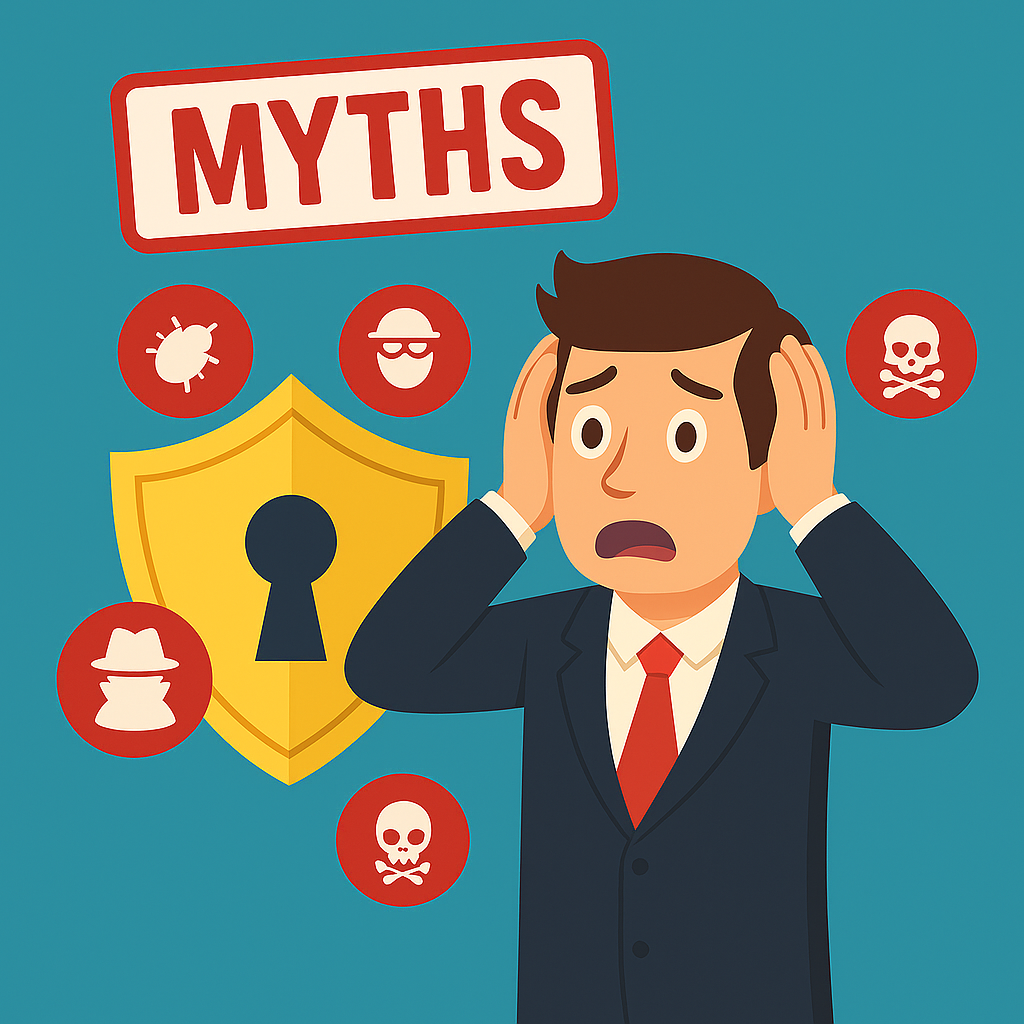
There are many common myths when it comes to cybersecurity, and, unlike harmless stories, these myths can leave you with gaping holes in your company’s cybersecurity defenses. Here are five common myths and the truth behind them.
Myth #1: It Won't Happen To Us.
There’s a common belief among small and medium-sized businesses that they are too small to be a target for attackers. But this isn’t the case; in fact, some cybercriminals target SMBs specifically, with the knowledge that SMBs are less likely to have the resources for reliable cybersecurity.
Cyberattacks happen to organizations of all sizes, in all verticals and geographies, and hit 80% of businesses. The global financial toll? A projected $9.5 trillion. And while large corporations can take the hit and recover, a single ransomware attack has the potential to put an SMB out of business.
So, regardless of what type of business or organization you have, you must protect yourself from cyberattacks and reduce your exposure. Always assume you are a target – because you are one.
Myth #2: If It Worked Then, It’ll Work Now.
It’s very common for decision-makers to reason that since they’ve never been breached in the past, they won’t be breached in the future either. However, that belief doesn’t account for the rapid pace at which technology – and cybercrime – are evolving.
The threat landscape is constantly changing and there is a very real game of cat-and-mouse at play. If you’re not moving forward, you’re moving backward. Effective security is a cycle of anticipation, adaptation and action.
Myth #3: Once Secure, Always Secure.
Unfortunately, technology is fluid – just like your business. Every time you bring on a new member of staff and add new devices, your technology’s configuration shifts. As it does, it creates new avenues of attack from cybercriminals.
That’s why continuous monitoring and management are necessary to maintain security integrity. The attack surface stretches beyond common focus areas. Because of this, strong cybersecurity demands a holistic, proactive, continuous approach.
Myth #4: Business Optimization Is Incompatible With Security.
Many organizations still assume that security initiatives create operational friction – delaying releases, adding red tape and increasing costs. This outdated thinking frames security and business optimization as mutually exclusive, as if improving one must compromise the other.
While these perceptions may have roots in the past, they don’t reflect modern practices. Today, security enables optimization. That means minimizing both waste and risk – including security risk.
In the end, secure systems are more resilient, predictable and cost-effective. This makes security a driver of business performance, not a barrier.
Myth 5: A Strong Password Is All I Need.
Creating a strong password (at least 16 characters long and a blend of letters, numbers and special characters) for each account is important, but it’s not the only step needed to keep your data secure.
For one, every account and device needs a unique password. If you reuse passwords, it means that if one of your accounts is hacked, all of your other accounts are at risk. To store all your unique passwords, we recommend a password manager!
Enabling MFA for every account will double your protection. The few seconds required to enter a code sent to your phone is well worth the extra security.
That said, there are plenty of other vulnerabilities that savvy hackers can exploit to attack your business’s data. That’s why working with an MSP is a critical component of maintaining your company’s cybersecurity.
Looking For An MSP?
If you need an MSP you can trust to keep your business secure, get in touch with our team to schedule a FREE 10-Minute Discovery Call. During this quick conversation, we’ll be able to map out the next steps to take to get your business’s cybersecurity up to snuff. To schedule, call us at (631) 224-9450 or click here.

